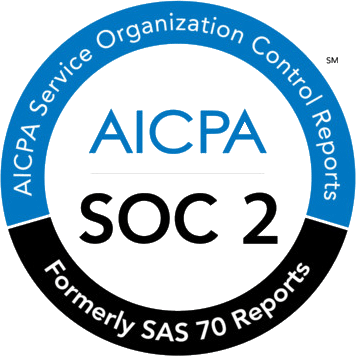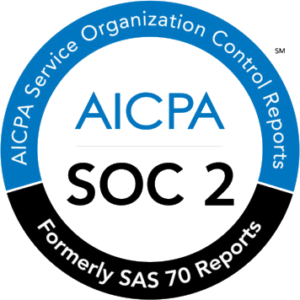Table of Contents
ToggleSummary
- An effective internal communications strategy is key to improving employee engagement, building a culture of innovation, ensuring transparency, aligning employees to organizational goals, helping companies survive crisis, reducing conflict, and making information available to employees in all locations.
- Technology has reshaped and improved internal communications.

Quality internal communication is crucial to the success of any business.
Organizations with an effective internal communications strategy are 3.5 times more likely to outperform their competitors. Employees who are well-informed perform better than 77% of their peers.
On the other hand, the negative impact of poor internal communication is high. For instance, 86% of employees attribute a company’s failure to reach its goals to inadequate communication.
What is internal communication?
Internal communication (also referred to as IC) is the flow of information and messages among individuals or groups within an organization.
Examples include the delivery of campaigns from management, the facilitating of conversation between employees, and the informing of staff of results, policies and company plans.
The seven most common types of internal communication are:
- Leadership-Generated Communication (top-down communication)
- Employee-Generated Communication (bottom-up communication)
- Peer-to-Peer Communication
- Change / Campaign Communication
- Information Communication
- Culture Communication
- Crisis Communication
The most commonly-used channels of internal communications within a company include:
- Verbal: Word-of-mouth, whether face-to-face or done via audio / video calling and conferencing/
- Paper: Hard copies of documents, posters and physical bulletin boards.
- Electronic: Transmitting information via email, instant messaging apps, project management software, electronic newsletter / internal website or documents viewed with the use of electronic devices.

Sadly, many organizations still do not see the value in establishing an effective internal communications strategy. That is despite the damning statistics showing the need for improvement in this area.
Here are seven reasons why it is important to change attitudes around internal communications.
Improves employee engagement
A McKinsey report revealed that employee engagement can lead to a 25% increase in productivity and can result in a 22% growth in profits.
This is because of the following:
- When employees are informed of company updates, changes and initiatives, they feel more motivated to perform and they are more invested in the goals of the organization.
- When they are provided the channel to share their suggestions, feedback and concerns, they feel valued and important.
A healthy level of employee engagement creates a sense of transparency, openness and trust within an organization. This trickles down to how employees communicate with clients and other stakeholders too.
Builds a culture of innovation
When a company creates opportunities for employees to openly share their thoughts and ideas, the organization can end up with a treasure chest of actionable and innovative ideas.
The book, Innovators’ DNA, revealed that individuals generate better ideas when they communicate with people outside their area of expertise.
For instance, team members in the Product Development or R&D teams will get more practical and applicable insights when they have a dialogue with colleagues from the frontline.
Innovation starts with dialogue, the sharing of knowledge, trust and transparency. All of these can be facilitated by an effective internal communication plan.
Boost employee retention & morale with parking benefits
Discover how Wayleadr's parking benefits can help you improve employee retention and morale
Learn MoreKeeps staff informed with real-time info
Real-time info can now be pushed out via apps, email, instant messaging services, and other online communication tools. This allows for organizations to keep their staff informed and the use of complete and accurate data has improved this process.
An inspiring example is Wayleadr’s last mile automation software, which uses data to eliminate the guesswork from journey planning.
It provides real-time alerts, which are incredibly useful for staff who are planning their commute to and from the office. This is an internal communications tool that actively improves your staff’s working experience.
Fosters organizational culture and values
Good internal communication ensures that employees feel connected with organizational goals. They recognize how their work contributes to the overall performance of the organization.
An effective internal communications strategy makes corporate workflows clear, breaks down organizational silos and allows employees to understand how their function is essential to the bigger picture.
This in turn encourages collaboration and teamwork between groups and individuals and creates a healthy environment where everyone thrives together.
Helps employees and the organization navigate difficult situations
The quality of your internal communications is tested in times of crisis- pandemics, lockdowns, mergers, acquisitions, political unrest, corporate restructuring, branch closures, etc.
Here, employees require accurate and precise information about what is happening in the organization and how this will affect them.
In the absence of a proper internal communications strategy, rumors and misinformation will escalate- and lead to toxicity and loss of trust in the company. In the worst case, the organization’s reputation might be damaged.
When companies communicate well internally, they can thrive in hard times.
Through difficult conversations, employers can help their employees grasp the whole situation better and promote trust.

Alleviates conflict and brings people together
“Effective communication requires more than an exchange of information. When done right, communication fosters understanding, strengthens relationships, improves teamwork, and builds trust.” – Liz Papadopoulos
Communication is the root of human connection.
Experts agree that poor communication is one of the major causes of conflicts, misunderstandings and clashes of ideas and personalities.
Of course, disagreements are inevitable in any workplace, and they can never be completely eliminated even with an effective internal communications strategy. However, how you handle these conflicts and facilitate dialogue between groups or individuals can make a world of difference on your company’s culture and overall success.
Breaks down the distance barrier
Research shows that remote employees and staff working a hybrid model are more likely to feel isolated. This, in turn, lowers their morale and makes them feel disconnected from the organization.
With the hybrid work model being used by 63% of high-growth companies (2022 data), an effective internal communications strategy that can transcend physical distance is a must.
If the company has multiple branch or office locations, either locally or overseas, the company must take extra care in making sure all employees have access to the same information and updates.
It all starts with good communication within the organization.
When employees are engaged and aligned with organizational goals, businesses can thrive and achieve positive results. A positive work culture and healthy relationships between colleagues ensure that people will work together even during difficult situations.
Wayleadr can be one of your powerful tools as you build your internal communications strategy. Book your free demo today.












